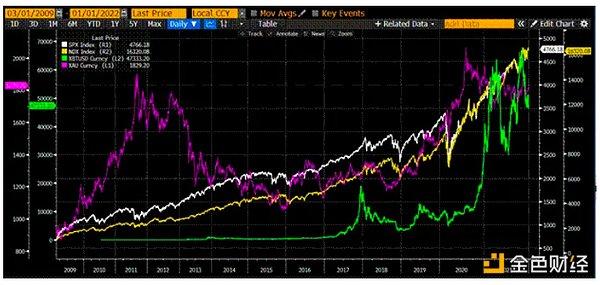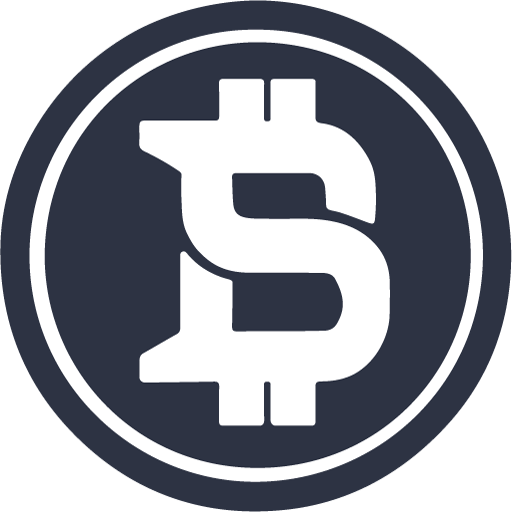Ethereum, the second largest blockchain in the world, has faced scaling challenges for years. With more and more decentralized applications (Dapp) being built on the platform, handling the increasing transaction and data storage needs has become more pressing than ever. This is what Ethereum's second-layer solution (aka "Layer2" or "L2") comes into play. These solutions aim to provide a scalable, efficient and low-cost infrastructure for Dapp built on Ethereum.
This article will compare 5 of the most popular Ethereum second-layer solutions, including Arbitrum, Optimism, Loopring, zkSync, and Aztec Network. We'll take a closer look at each solution's unique features, pros and cons, and use cases.

The concept of Layer2
With the development of blockchain technology, people began to propose a new concept - "Layer2". So, what is Layer2?
Layer 2 is an important concept in blockchain technology. It refers to building a new layer of protocol on the basis of blockchain to increase the processing capacity and transaction speed of blockchain. To put it simply, it is to add an additional layer of "highway" on top of the blockchain to make transactions faster and more convenient.
Unlike the traditional Layer 1 (Bitcoin, Ethereum, etc.), the Layer 2 protocol does not make any modifications to the underlying blockchain, but achieves high-speed transactions by establishing a protocol on the upper layer. Therefore, the Layer 2 protocol can greatly increase the transaction speed of the blockchain dozens of times, and can also significantly reduce transaction costs.
The advantage of the Layer 2 protocol is that it can handle more transactions while also ensuring the security and reliability of transactions. In addition, because the Layer 2 protocol is built on top of existing blockchain technology, its development and deployment costs are relatively low, and it is easier to be widely used.
Layer2 protocols are also widely used. The emergence of these protocols not only solves the problem of insufficient processing capacity of the blockchain, but also provides the possibility for the large-scale application of the blockchain. In short, Layer 2 is an important development direction of blockchain technology. It can bring a more efficient, safer and more convenient transaction experience to the blockchain, and inject new vitality and impetus into the development of the blockchain.

Representative project
Arbitrum
Arbitrum is a Layer 2 solution designed to solve Ethereum's scalability, speed, and privacy issues. It uses Optimistic Rollups to process transactions off-chain before submitting them to the Ethereum mainnet. This reduces gas costs, increases scalability, and enhances privacy. Arbitrum allows the creation of smart contracts that allow developers to build new projects on top of Layer 2 protocols. Network effects drive the success and adoption of cryptocurrencies.
Since the launch of Arbitrum in August 2021, the ecosystem has grown exponentially and many projects have launched and migrated to the network. Arbitrum has surpassed Binance Smart Chain to take second place in terms of daily and weekly trading volume. However, the total value locked is still lower than Ethereum, Binance Smart Chain and Tron. The Arbitrum team cleverly took advantage of the AirDrop speculation to maintain the heat and increase the volume and number of transactions.

Optimism
Optimism is an Ethereum-based second-layer solution that uses the Optimism Rollup mechanism to improve network scalability and efficiency. As its name indicates, it is the creator of the Optimism Rollup idea. Its transaction confirmation speed is very fast, and the fee is also very low, so Dapp built on Optimism can achieve efficient and low-cost transactions. Optimism also provides a fully compatible Ethereum environment, allowing developers to easily migrate existing Ethereum Dapps to Optimism.
Loopring
Loopring is a second-layer solution focused on decentralized exchanges (DEXs), designed to provide scalable and efficient infrastructure for DEXs. It uses a zero-knowledge proof mechanism to confirm transactions, enabling Dapp built on the Loopring network to achieve faster and more private transactions. At the same time, Loopring also provides a highly flexible transaction structure, allowing developers to build various types of DEX applications according to their own needs. But it is a pity that Loopring currently focuses on transactions and has no idea of making it a general-purpose blockchain.
zkSync
zkSync is an Ethereum-based second-layer solution that utilizes zero-knowledge proof mechanisms to improve network scalability and efficiency. Its core idea is to extract the transaction confirmation process from the Ethereum network, so as to reduce the time and cost of transaction confirmation. Dapps built on zkSync can achieve faster and more efficient transactions, while also enjoying the security and programmability of Ethereum smart contracts.
Aztec Network
Aztec Network is a second-layer solution focused on providing secure and efficient Dapps built on Ethereum. It uses zero-knowledge proof technology to encrypt transaction data, thereby protecting user privacy and transaction security. At the same time, Aztec Network also supports complex financial contracts and asset management, enabling Dapps built on it to achieve more diversified financial applications.
Future trends
Layer 2 is an important field of blockchain technology, and its main purpose is to solve the expansion and performance problems on public chains such as Ethereum. In the future, the development trend of the Layer2 track can be summarized into the following three aspects:
Continuous innovation and improvement in technology
Currently, Layer 2 technologies mainly include state channels, side chains, and Rollups. In the future, with the continuous innovation and improvement of technologies, these technologies will be continuously optimized and improved to improve their performance in terms of performance, security and scalability. For example, state channels can improve their efficiency and security by introducing more optimization algorithms and protocols, and Rollups can be further subdivided into different variants such as OP series and ZK series to meet the needs of different application scenarios.
Especially after Ethereum turned to PoS, under the support of Lido, Coinbase, Ebunker and other mining pools, the stable block production of Ethereum also allowed L2 to flex its muscles. Many L2 features cannot be upgraded in the PoW era of Ethereum.
Continuous expansion and deepening of application scenarios
At present, Layer2 is widely used in various fields such as DeFi, games, NFT and payment. In the future, with the continuous development and improvement of Layer2 technology, its application scenarios will continue to expand and deepen. For example, Layer 2 technology can be applied to areas such as asset management, insurance, supply chain management, and digital identity to realize more blockchain application scenarios.
The gradual maturity and improvement of the ecosystem
At present, the Layer 2 ecosystem is still in its infancy and needs to be continuously developed and improved. For example, a better developer community and user community can be established, better development tools and application interfaces can be provided, and a more stable and reliable Layer2 infrastructure can be built.
In short, the future development trend of the Layer 2 track will mainly focus on three aspects: technological innovation, application scenario expansion, and ecosystem improvement. Layer 2 technology is of great significance in solving the performance and expansion problems of public chains, and will untie the "curse" of performance bottlenecks for blockchain technologies such as Ethereum.







